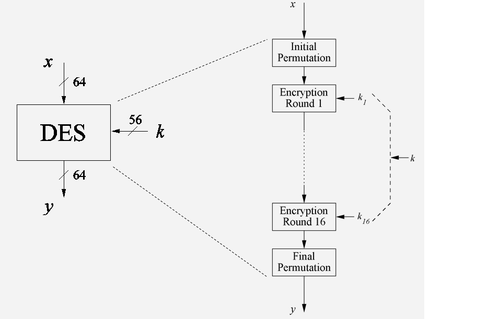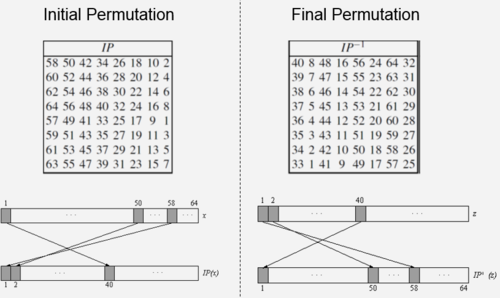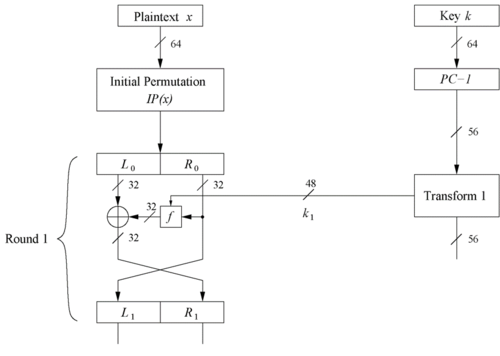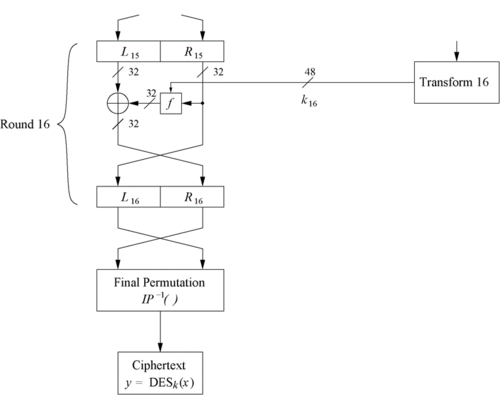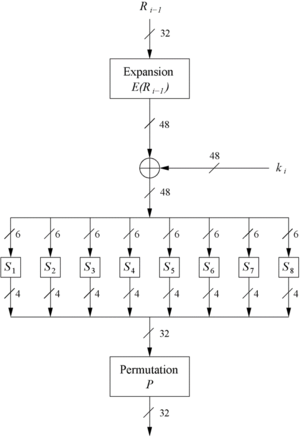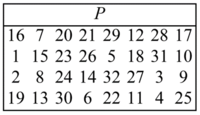DES - Overview and Encryption
A slecture on Cryptography by student Divya Agarwal and Katie Marsh
Partly based on the Cryptography Summer 2015 lecture material of Prof. Paar.
Contents
[hide]Overview of DES Algorithm
- DES is a Symmetric cipher: uses same key for encryption and decryption
- Uses 16 rounds which all perform the identical operation
- Different subkey(48 bit) in each round derived from main key
Internal structure of DES
1. Initial Permutaion(IP) : This is the first thing that is seen in the expanded view of DES block in Fig 1.
- IP is a bitwise permutation or simple crosswiring in hardware.
- The corsswiring is done according to the table(left) given in Fig 2.
- The IP has no effect on the DES security at all.
2. DES Encryption Round - Feistel Networks
- DES structure is a Feistel network
- Advantage: encryption and decryption differ only in keyschedule( explained later )
- The encryption block for round 1 in Fig 3 takes an input of 64 bit data permuted in the IP
- Plaintext is split into 32-bit halves $ L_i $ and $ R_i $
- $ R_i $ is fed into the function f, the output of which is then XORed with $ L_i $
- Left and right half halves are swapped at the end of one encryption round
- Each encryption round can be expressed as :
$ L_i = R_{i-1} $
$ R_i = L_{i-1} \oplus f(R_{i-1},k_i) $
- And as seen in Fig 1, we have sixteen such rounds.
- And the Left and Right side bits are swapped again before the Final Permutation(FP) as shown in Fig 4.
3. The f-funtion(inside the feistel network)
- Main operation of DES
- Inputs to f function are $ R_{i-1} $ and round key $ k_i $
- It has 4 main steps in Fig 5 :
** Expansion block E ** XOR with round key ** S-box substitution (eight of them) ** Permutation
3.1 The Expansion fucntion E
- The main purpose of the expansion funtion is to increase diffusion in the input $ R_{i-1} $ bits.
- It is done using the table shown in Fig 6.
3.2 XOR with round key
- Bitwise XOR of the round key $ k_i $ and the output of the expansion function E
- We take a 48-bit expanded message bit and XOR with 48-bit key input and the output data is also 48-bit (Fig 5)
[Round keys are derived from the main key in the DES keyschedule later in the notes]
3.3 The DES S-Box substitution
- Eight substitution tables which form the core security of DES (Refer book)
- Take 6 bits of input and gives 4-bit output
- Non-linear and resistant to differential cryptanalysis
3.4 The Permutation P
- This is the last step in the f-fucntion in Fig 5.
- It is also bitiwse permutation, which introduces diffusion using the table in Fig 7.
- Output bits of one S-Box effect several S-Boxes in next round.
- Diffusion by E, S-Boxes and P guarantees that after Round 5 every bit is a function of each key bit and each plaintext bit.
The complete lecture on DES by Prof. Paar can be found here.
References
- C. Paar. Understanding Cryptography. Lecture Notes. Dept. of Electr. Eng. and Information Sciences, Ruhr University.
- C. Paar and J. Pelzl. Understanding Cryptography. A textbook for Student and Practitioners. Springer 2010.
Questions and comments
If you have any questions, comments, etc. please post them here.
Back to 2015 Summer Cryptography Paar

